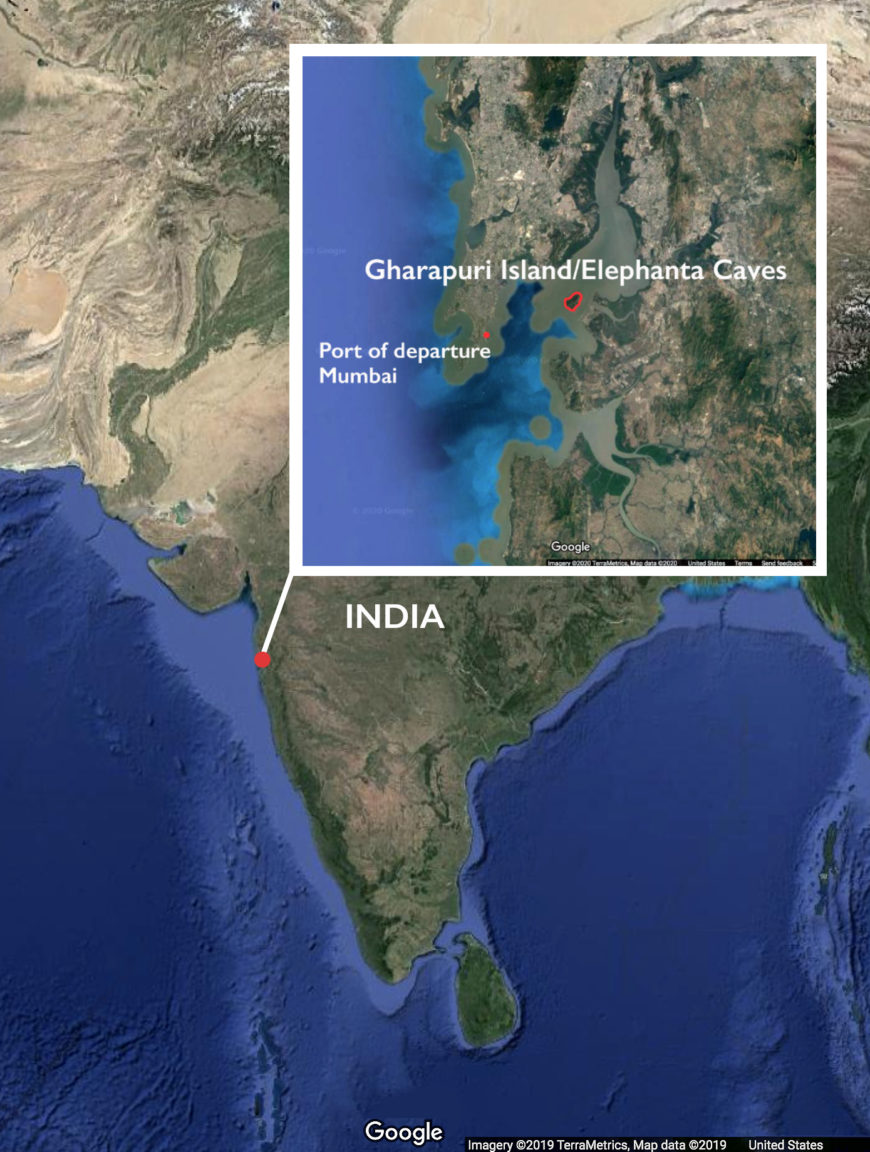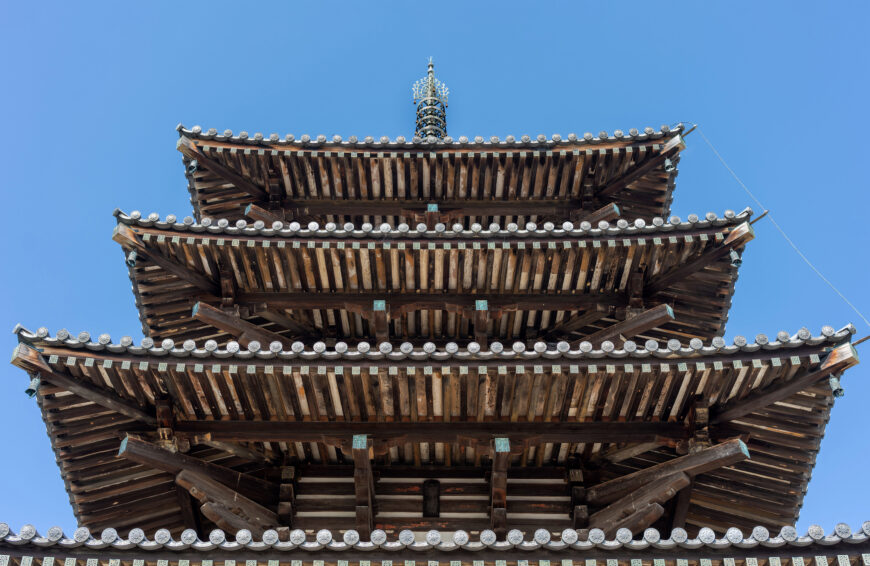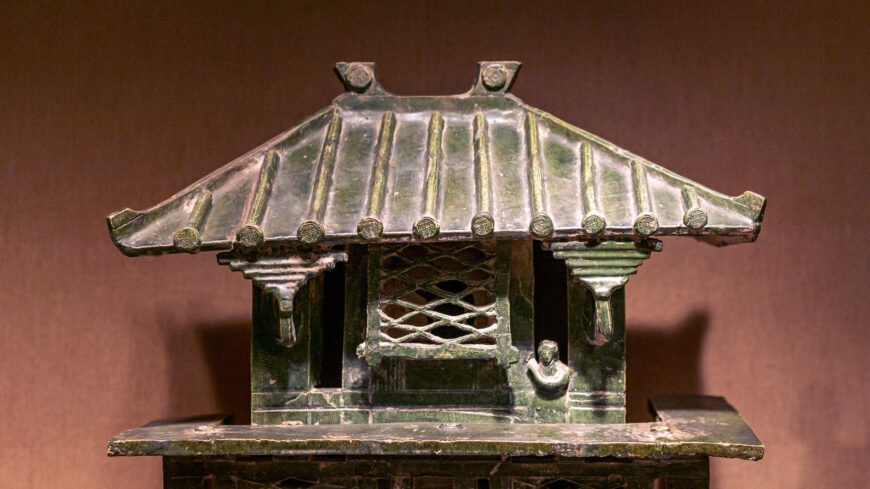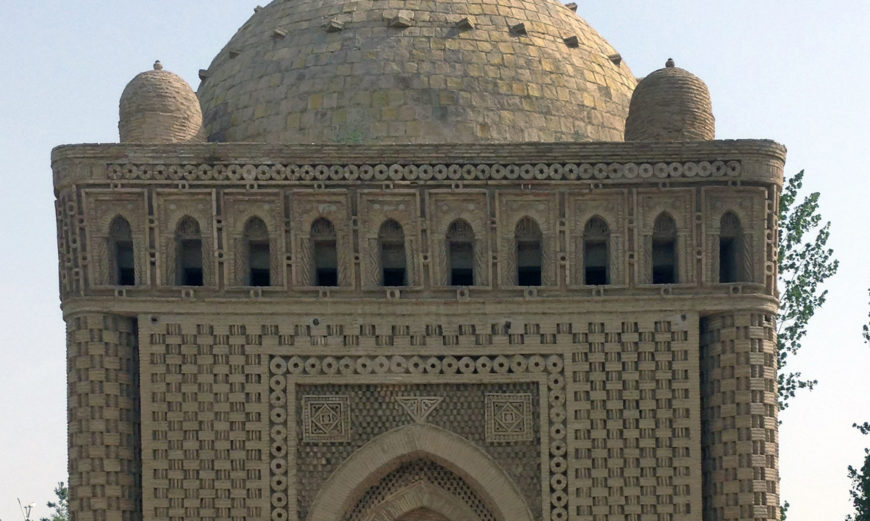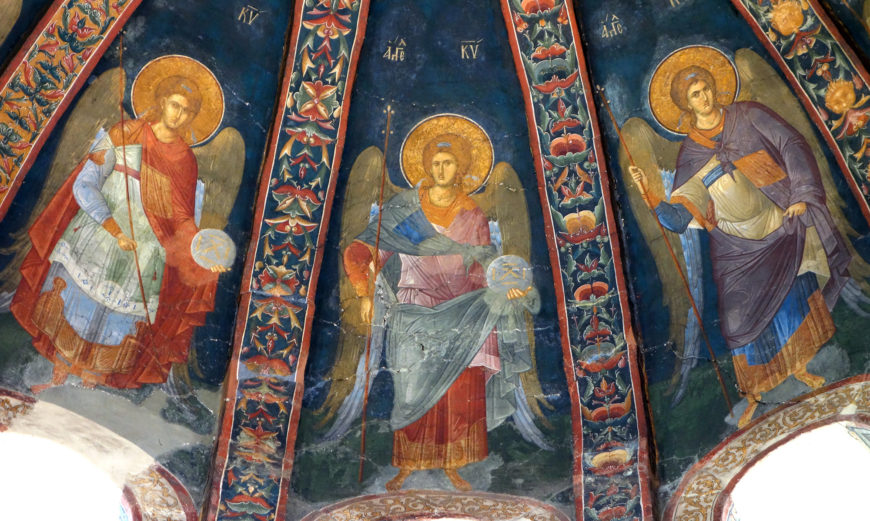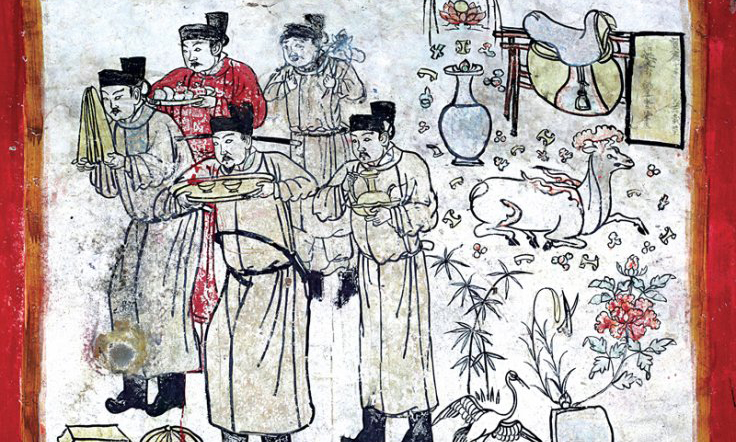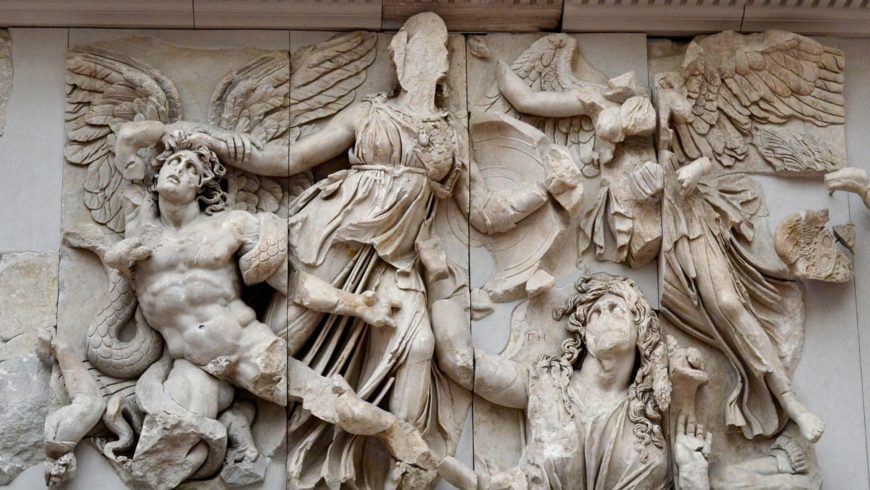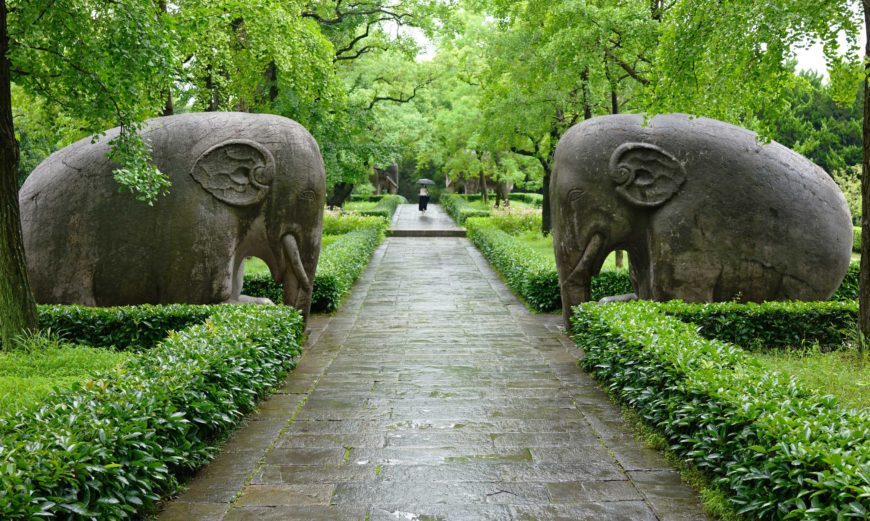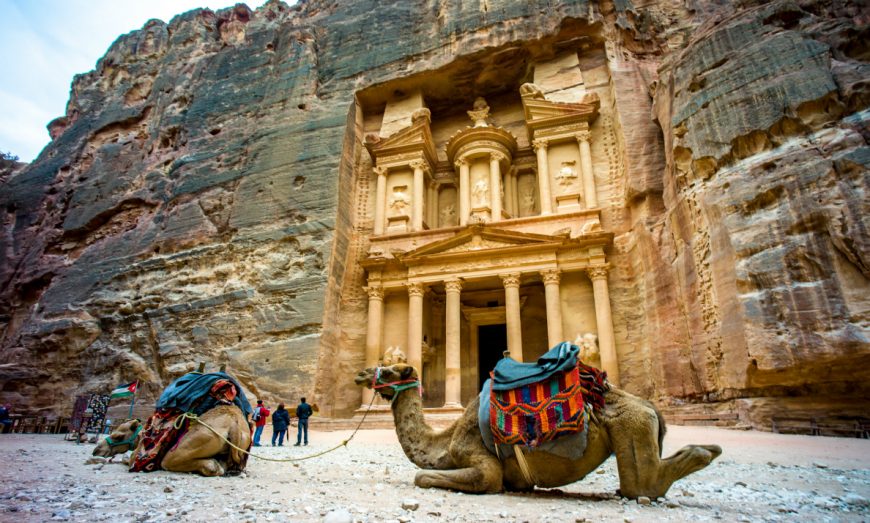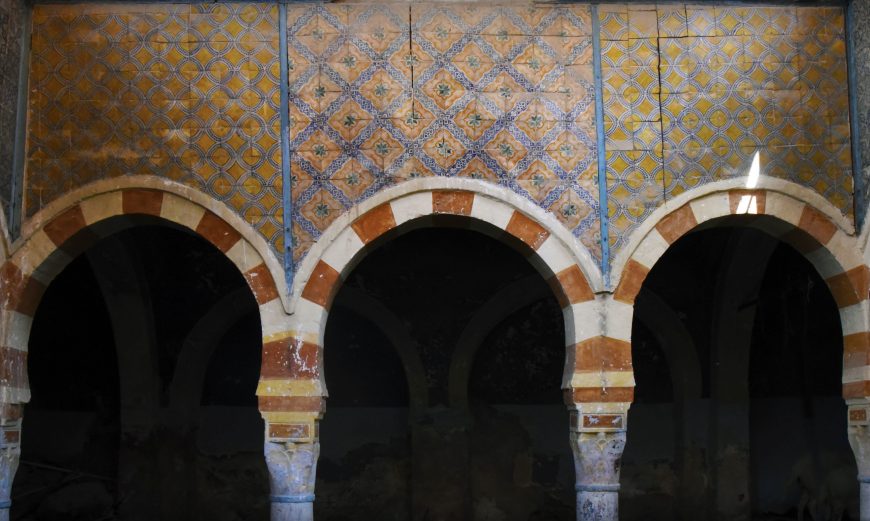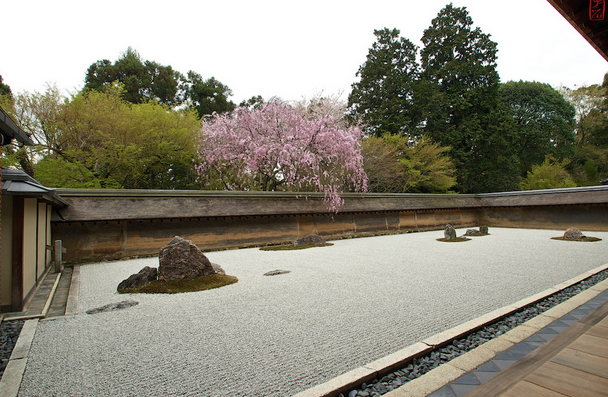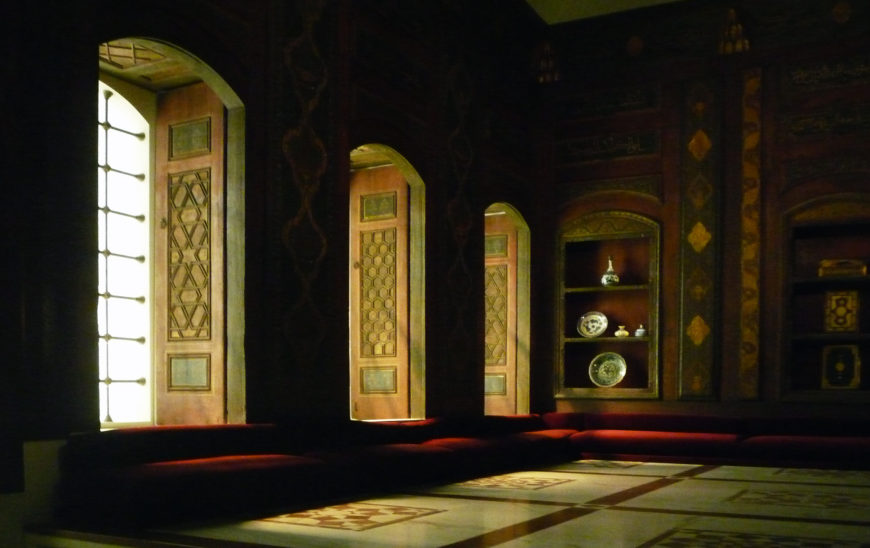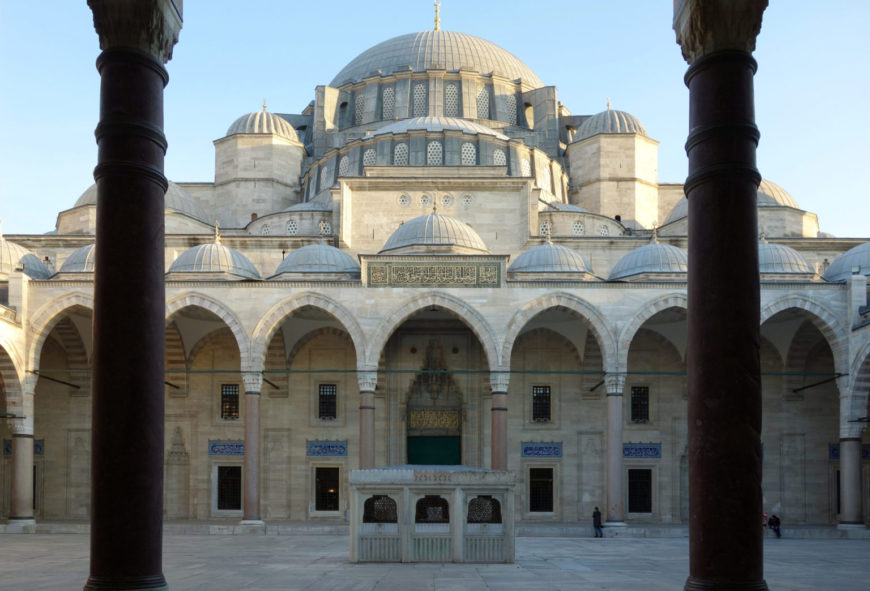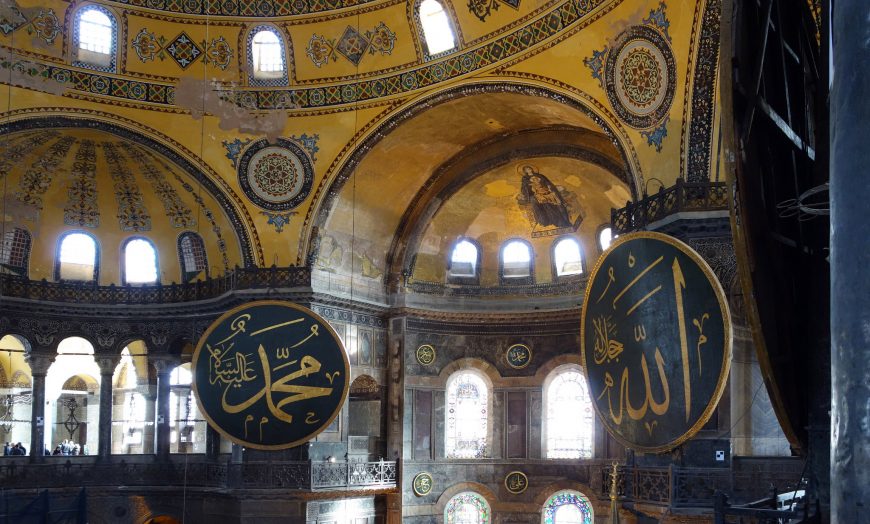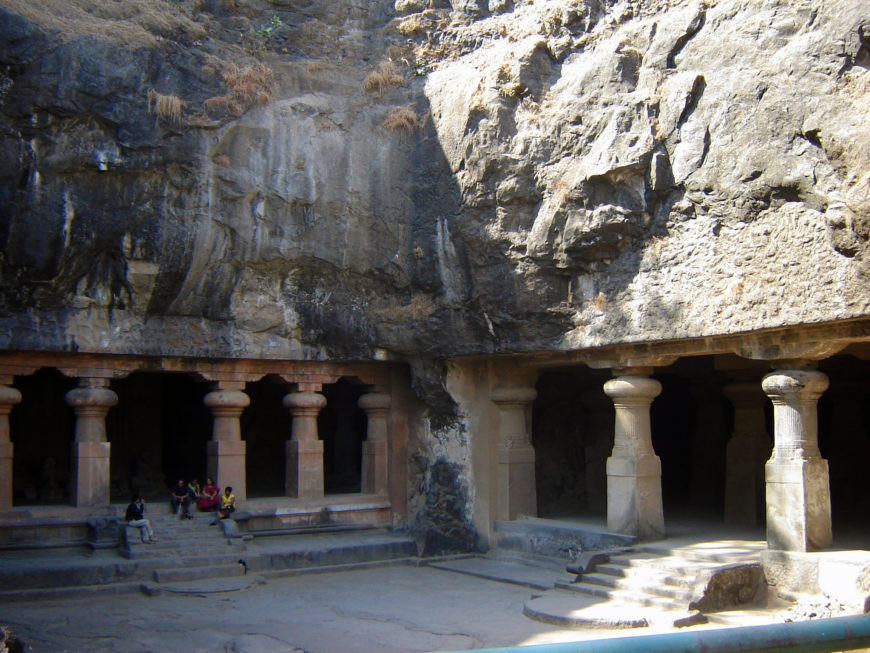
Eastern entrance, Elephanta’s Cave of Shiva, c. 6th century C.E. Gharapuri island (photo: Elidioo, CC BY-SA 4.0)
On Gharapuri island on the west coast of India, not far from the city of Mumbai, is the rock-cut complex of monuments popularly known as Elephanta. Visitors travel by boat from Mumbai and then climb a hill either by train or by over a hundred stairs to reach the caves of Elephanta. A large reconstructed stone elephant (below) from Gharapuri that is believed to have inspired the references of Portuguese colonists to the island as a ilha do elefante (the island of the elephant) [1], is found today at the Dr. Bhau Daji Lad Mumbai City Museum.
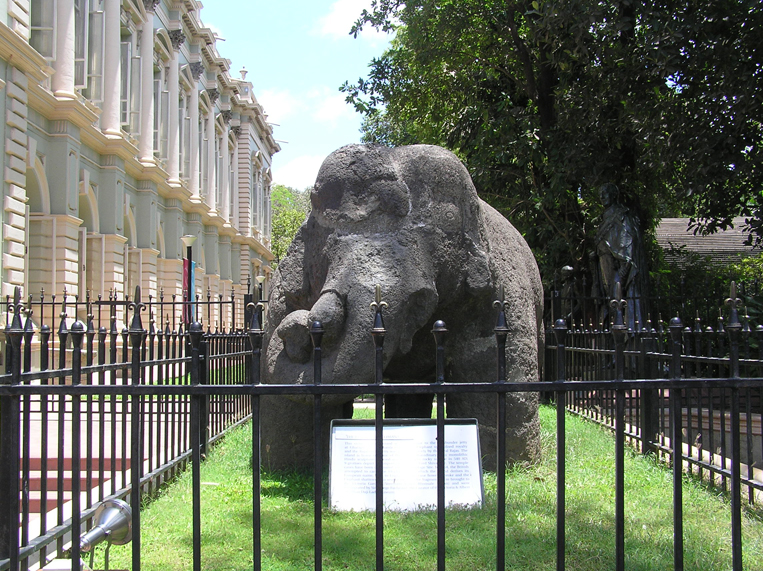
Stone elephant, originally located on Gharapuri island, c. 6th century C.E. (photo: Elroy Serrao, CC BY-SA 2.0)
Elephanta island has multiple Hindu caves and Buddhist monuments, as well as excavated caves that were left incomplete. This essay focuses on one particularly remarkable rock-cut cave that is an early example of an unconventional and innovative religious program in stone. The cave temple is dated to the sixth century and is dedicated to the Hindu god Shiva.
In Hinduism, god transcends form. But an emphasis on an underlying omnipotent and universal spirit (Brahman) allows for the existence of a large pantheon of deities. Each deity can, in turn, have many embodiments and a range of iconographic representations are employed in Hindu sacred art to tangibly portray the gods.
The cave of Shiva at Elephanta has at least ten distinct representations of Shiva; two of these – Shiva as Ardhanarishvara, in which Shiva and the goddess Parvati are joined as one, and Shiva as Gangadhara, in which Shiva is shown bearing the force of the river goddess Ganga’s descent to earth, are referenced below. Shiva’s manifestation as Sadashiva wherein the manifold aspects of Shiva are depicted on multiple faces is also discussed, as is the cave’s Shiva linga. Like Sasashiva, and the many other forms of Shiva at Elephanta, the linga references the all-pervading nature of the deity, but does so in the form of an aniconic (non-representational) symbol.
The resources that it must have taken to conceptualize, excavate, and execute this cave suggests a considerable investment on the part of its patron or patrons. Scholars have suggested that the cave may have been sponsored by Krishnaraja I (who ruled from c. 550 – 575 C.E), a known Shiva devotee and ruler of the Kalachuri kingdom that was active in the region in the sixth and seventh centuries. Krishnaraja’s coins have been found at the site, but the extent of the Kalachuris’ direct involvement with the cave remains unresolved.
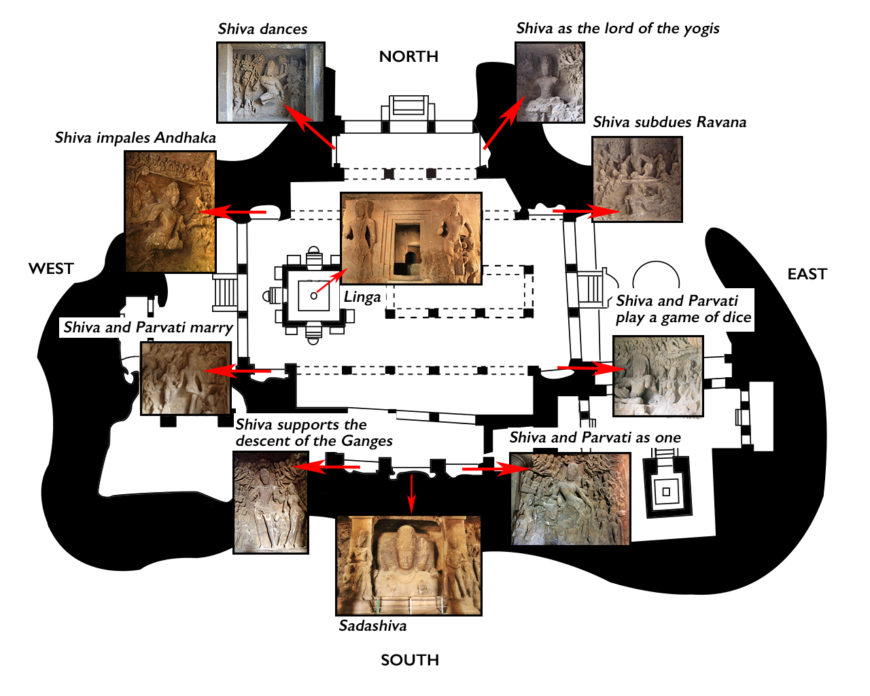
Main features of Elephanta’s Cave of Shiva, c. 6th century C.E. Gharapuri island. Plan adapted from fig. 1, p. 18 of George Michell’s “The Architecture of Elephanta” (see reference below). Photo credits for insets (from left to right): Shiva dances (Jean-Pierre Dalbéra, CC BY 2.0), Shiva as the lord of yogis (Scott McLeod, CC BY 2.0), Shiva subdues Ravana (Sivaraj D., CC BY-3.0), Shiva and Parvati play a game of dice on mount Kailasa (Andy Hay, CC BY 2.0), Ardhanarishvara (Ricardo Martins, CC BY 2.0), Sadashiva (Ronakshah1990, CC BY-SA 4.0), Shiva supports the descent of the Ganges (Sivaraj D., CC BY-SA 3.0), Shiva and Parvati marry (Sivaraj D., CC BY-SA 3.0), Shiva slays Andhaka (Elroy Serrao, CC BY-SA 2.0); Linga shrine (Ricardo Martins, CC BY 2.0).
A pillared hall with a shrine at the end
The interior of the cave measures approximately 130 x 130 feet.[2] Its pillared hall is lit by natural light from just three openings — one each at the east, the north, and the west ends of the cave. The openings at the east and the north sides of the cave serve as entrances with sunken courtyards and impressive porticoes. The opening on the west opens to a small open-air corridor that leads to a side shrine.
As we enter the cave from the eastern entrance, we encounter an impressive row of tall pillars and a large square shrine situated near the far west end of the cave (see image below). The pillars have fluted tops and cushion capitals and four small seated figures at each corner of their plain rectangular bases. At a height of about sixteen feet, carved beams with brackets that rest on the pillars’ capitals travel east to west in the cave’s ceiling. [3] With the exception of the nine large bas-reliefs (illustrated in the plan above) and the guardian figures on the shrine and on the cave’s south wall, the walls of the cave and of the shrine are undecorated.
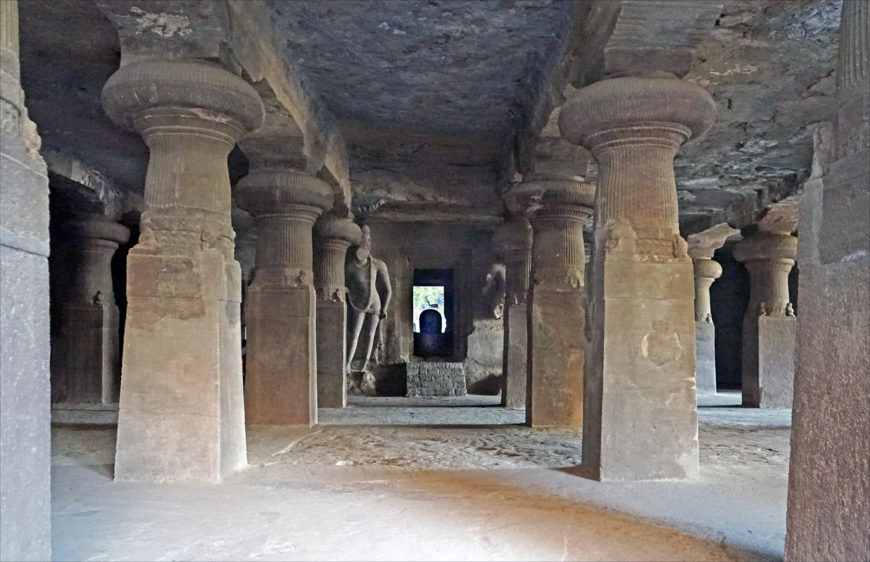
Looking towards the west end of the cave at the shrine with the Shiva linga, Elephanta’s Cave of Shiva, c. 6th century C.E. Gharapuri island (photo: Jean-Pierre Dalbéra, CC BY-SA 2.0)
The entire cave and everything in it can be seen as one large sculptural piece that embraces both the character of the hill from which it is carved and the design of built structures that were likely in vogue in the sixth century. The inclusion of the pillars in the cave gives the impression that they are weight-bearing columns that reinforce the roof as they would in a built structure, and that they are aided in that task by the ceiling beams.
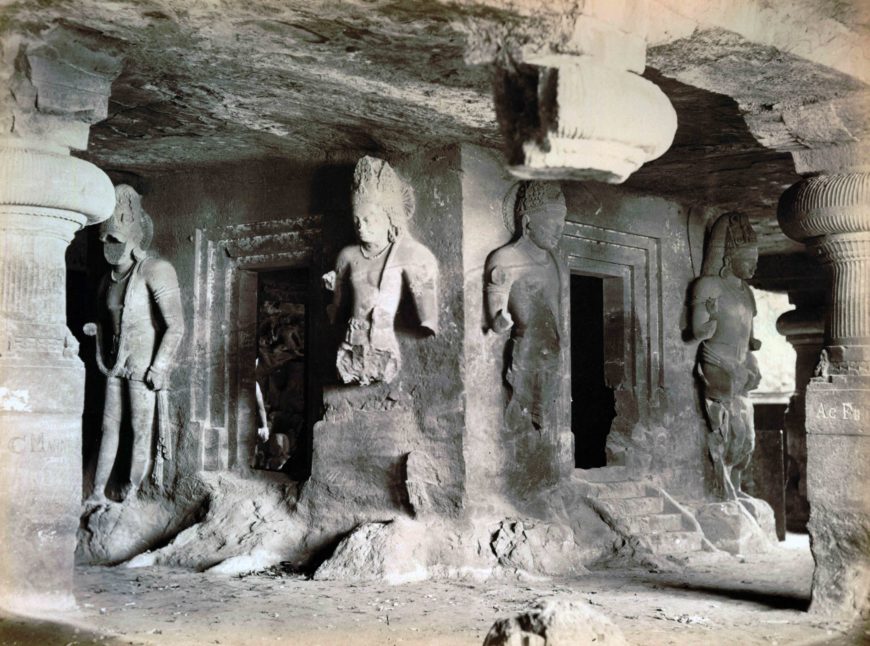
View of the linga shrine and its guardians before reconstruction, photo taken c. 1875, Elephanta’s Cave of Shiva, c. 6th century C.E. Gharapuri island (photo: public domain)
A shrine for Shiva linga
The shrine near the far west end of the cave is carefully subtracted from the hill to appear free-standing. But the shrine, along with the Shiva linga within it, is a part and parcel of the hill. A short set of stairs on all four sides of the shrine leads to four open doorways and there is enough space within the shrine to allow the devotee room to circumambulate the linga. When devotees pray to the linga, they are praying to an aniconic representation of Shiva and acknowledging the sacred generative aspect of the universe.
Each of the shrine’s four entrances are flanked by majestic guardian figures who are as tall as the shrine. Some of these figures are accompanied by smaller attendants and hierarchic scale is employed to indicate the relative importance of the larger figures.
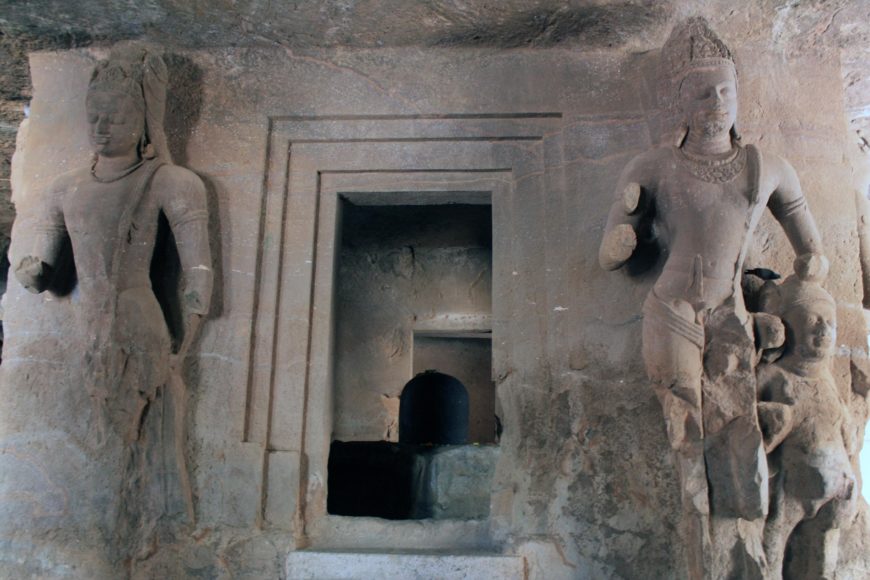
The linga and the shrine’s guardians (each in a “three-bent pose”), Elephanta’s Cave of Shiva, c. 6th century C.E. Gharapuri island (photo: Ricardo Martins, CC BY-2.0)
The guardians are shown wearing elaborate crowns and jewelry including earrings, armbands, necklaces, and belts. Each pair of guardians at each entrance is also shown in the tribhanga (three-bent pose) in such a way that they appear to balance one another. The figure to our left in the image above, for example, leans to their left whereas the figure to our right leans to their right. The resulting effect is subtle but provides a remarkable quality of naturalism to the enormous stone figures.
It is difficult to know for certain what the guardians once held in their hands. The extensive damage, particularly to the lower half of these figures and the cave’s bas-reliefs, was caused by artillery training conducted by Portuguese forces in the sixteenth century.
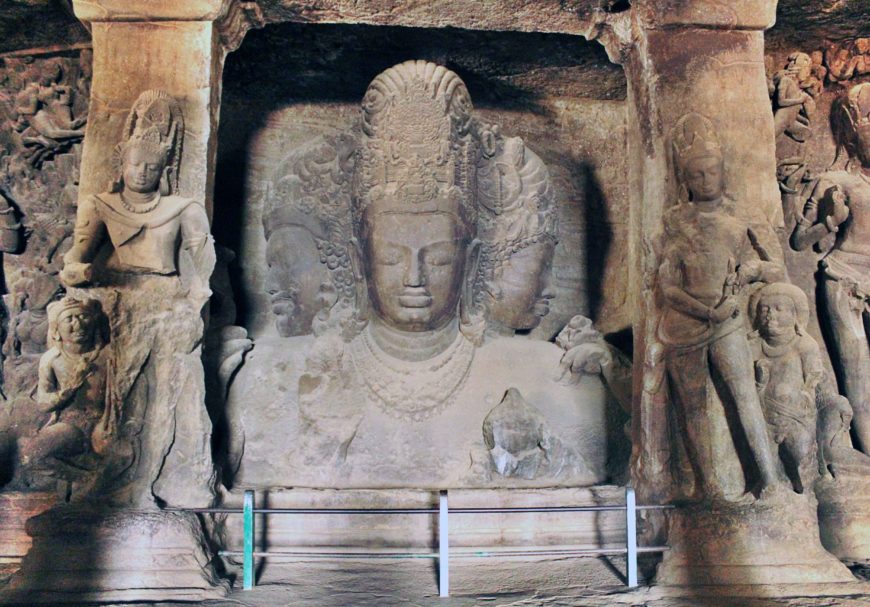
Sadashiva, south wall of Elephanta’s Cave of Shiva, c. 6th century C.E. Gharapuri island (photo: Ronakshah1990, CC BY-SA 4.0)
The many faces of Shiva
If we enter the cave again, this time via the northern entrance, we again encounter the same pillared hall. But as we move further into the cave, a centerpiece in shadow at the far end of the cave comes into view. Here we find a deeply recessed, nearly 21 foot tall, three-headed Shiva known as Sadashiva (see above). A fourth head at the rear and a fifth head at the top is implied. Again, tall guardian figures and attendants flank either side of the icon just as they do at the four entrances of the shrine dedicated to the aniconic linga.
We only see a part of Sadashiva, that is, from the chest upwards, and the suggestion is that the god is emerging from the mountain. The artists have carved the image with such skill that the broad shoulders of the central face appears to seamlessly carry the heads shown in profile. The faces each acknowledge an aspect of Shiva — the image at the center is calm and welcoming while the face to the viewer’s left shows Shiva’s ferocious aspect. His fierceness is emphasized by a twisted mustache, frowning expression, skulls and snakes in his matted hair, and earrings in the form of snakes. The face on the viewer’s right is meant to signify a gentler aspect of Shiva. This face is shown with soft curls, wearing a sweet-tempered smile, and carrying a lotus.
Theatrical opposites
The cave continues exploring Shiva’s various aspects in bas-reliefs that are carved in deeply framed niches that are as tall as the height of the cave. Eight sculptural panels — two each at the three entrances into the cave and two flanking the Sadhashiva are carved facing one another. Each representation of Shiva is large and impressive and the scenes are filled with subsidiary figures — divine and otherwise — who witness and participate in each episode. The subsidiary figures, even the gods, are rendered much smaller than Shiva.
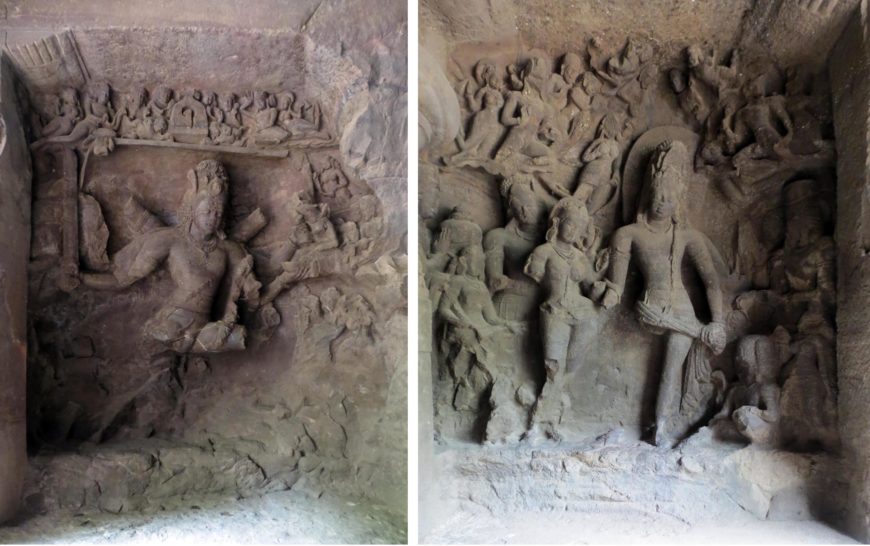
Shiva impales the demon Andhaka (left) and Shiva and Parvati marry (right), Elephanta’s Cave of Shiva, c. 6th century C.E. Gharapuri island (photo: Arathi Menon, CC BY-SA 4.0)
The eight bas-reliefs are as follows:
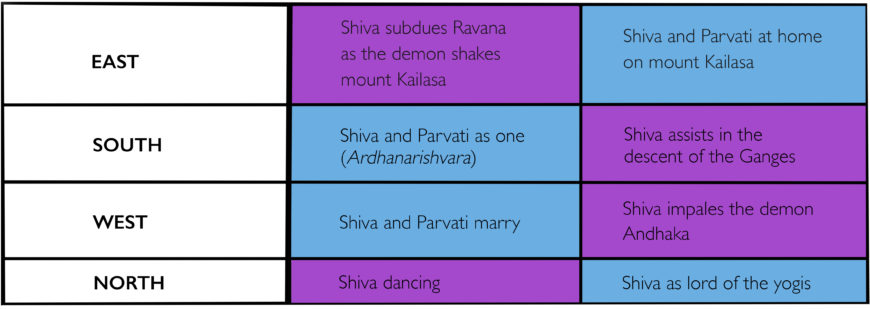
Chart of bas-reliefs (clockwise from eastern entrance) at Elephanta’s cave of Shiva, 6th century C.E., India. Shiva’s active moods are marked in purple and his passive moods in blue.
Architectural historian George Michell has suggested that Elephanta’s artists intentionally wove an exploration of the active and passive moods of Shiva in the sculptural program of the cave’s bas-reliefs. [4] Michell’s theory is compelling; in the chart above, purple is used to denote the bas-reliefs that celebrate Shiva’s dynamic, energetic, and vigorous moods and the color blue is used to denote calmer episodes. This oppositional formula also extends to the iconic Sadashiva with its fierce and gentle aspects, as well as to the linga and Sadashiva as unmanifested and manifested representations of Shiva respectively.
The bas-reliefs that flank Sadashiva at the south wall are somewhat different in their antithetic message. To the viewers’ left we find Shiva and the goddess Parvati joined as one, in a manifestation known as Ardhanarishvara. As is common in representations of Ardhanarishvara, which translates literally to Shiva as half-woman, the deity is presented as a composite male and female figure. Fused at the exact center, the male half of the body is shown leaning on Shiva’s vahana (vehicle), the bull.
In the panel on the right, we see a representation known as Shiva Gangadhara, that is, Shiva as the bearer of the river Ganga. The river Ganges (also known as Ganga) is personified here as a three-headed goddess in the process of descending to earth via Shiva’s matted hair. By supporting goddess Ganga’s descent, Shiva softens the considerable force of the river’s descent to our world, which would otherwise shatter. Art historian Vidya Dehejia has pointed out that the goddess Parvati, conceivably annoyed at her husband’s role in the episode, is shown by the artist as moving away from Shiva in a subtle foreshadowing, perhaps, of disconcert. [5]
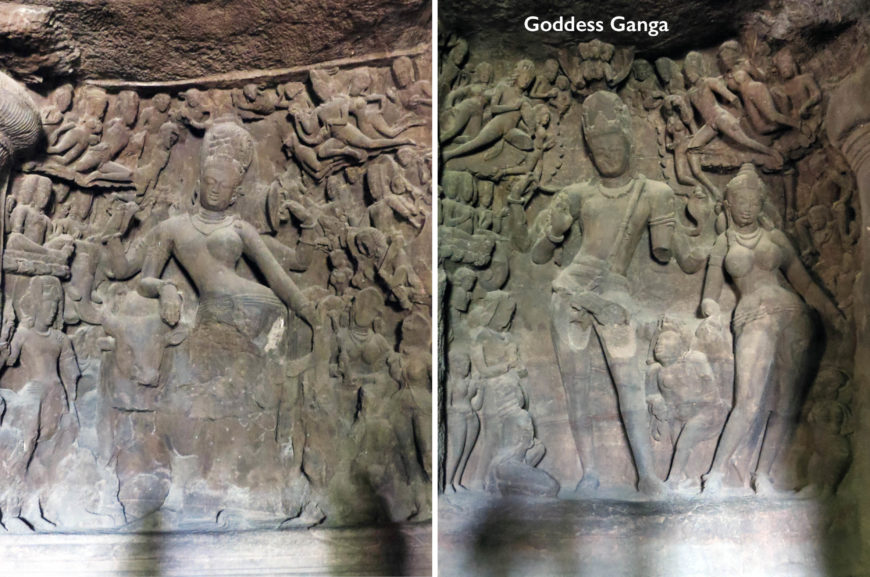
Ardhanarishvara (left) and Shiva Gangadhara (right), Elephanta’s Cave of Shiva, c. 6th century C.E. Gharapuri island (photo: Arathi Menon, CC BY-SA 4.0)
In Hinduism, images of the gods are embodiments of the gods and to enter a temple is to enter the home of god. Devotees are happy to take the pilgrimage necessary to see and to be seen by god in an act of darshan (auspicious sight). At Elephanta, in this grand cave temple with Shiva’s manifest and unmanifest forms and his fierce and pleasant selves, the intention appears to have been to offer the devotee much more. With each theatrical introduction to Shiva, the devotee is offered again and again the opportunity to honor and to know their god in a multitude of profound ways.
Shiva as the lord of yogis
Shiva dances
Shiva and Parvati play a game of dice at home on mount Kailasa
Shiva subdues Ravana as the demon shakes mount Kailasa
Shiva impales the demon Andhaka
Shiva and Parvati marry


